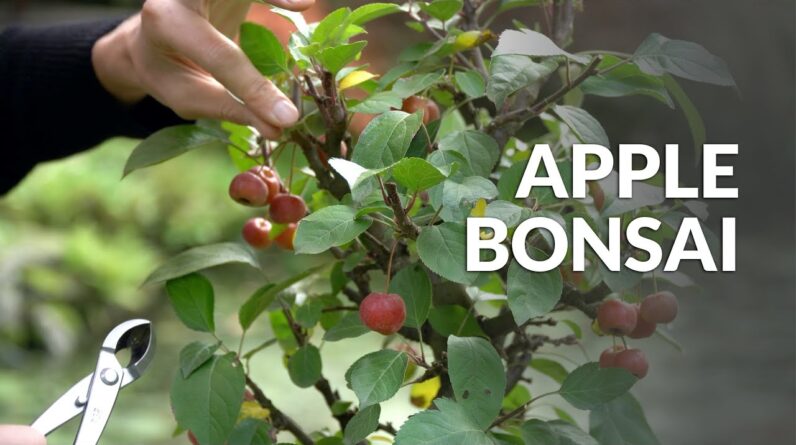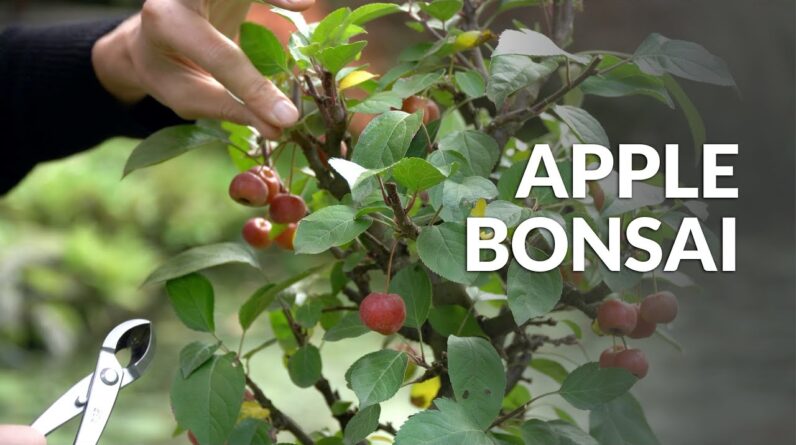Learn how to care for your Aralia bonsai tree with this comprehensive guide. Master trimming, wiring, and repotting techniques to keep your bonsai thriving. Proper watering, light exposure, and fertilization are also essential. Choose a fast-draining soil mix and be aware of any toxicity concerns. Whether you're a bonsai enthusiast or just starting out, caring for your Aralia bonsai will bring joy and satisfaction.
If you're looking to add a unique touch to your garden or home, a Aralia bonsai tree might just be the perfect choice.
Originating in Japan during the Edo period, these bonsai trees have enchanting branching patterns and deep green foliage that adds beauty and charm to any space. While growing an Aralia bonsai from seed can take one to three years, the efforts are well worth it.
To properly care for your Aralia bonsai, it's crucial to master trimming, wiring, and repotting techniques. Regular watering, indirect light exposure, fertilization, pruning, and repotting are also necessary to keep your Aralia bonsai thriving. Just make sure to choose a fast-draining soil mix and be aware that some varieties of Aralia bonsai are toxic, so precautions should be taken if there are children or pets around.
While Aralia plants are typically not grown as houseplants, there are some indoor varieties available for those who prefer to keep their Aralia indoors. Whether you're a bonsai enthusiast or just starting out, caring for your Aralia bonsai will bring you joy and satisfaction.
Aralia Bonsai Tree Care Guide
Introduction to Aralia Bonsai
Aralia bonsai is a bonsai tree species that originated in Japan during the Edo period. It is a unique and attractive plant that has gained popularity among bonsai enthusiasts. With its unique branching patterns and deep green foliage, the Aralia bonsai adds a touch of elegance to gardens and homes. In this comprehensive care guide, we will explore the unique features of Aralia bonsai, its popular uses, essential techniques for care, and how to grow and maintain this beautiful bonsai tree.
Unique Features of Aralia Bonsai
One of the most distinctive features of the Aralia bonsai is its branching pattern. The branches grow in a twisting and contorted manner, creating an intricate and fascinating shape. The deep green foliage is another notable feature, with leaves that are small and delicate.

Popular Uses of Aralia Bonsai
Aralia bonsai trees are popular among bonsai enthusiasts for their unique appearance and ability to thrive in various climates. They are commonly used as ornamental plants, adding a touch of elegance to gardens, patios, and even indoor spaces. The Aralia bonsai can also be trained and styled in different bonsai techniques, adding further artistic value to any collection.
Essential Techniques for Bonsai Aralia Care
To properly care for an Aralia bonsai, certain techniques need to be mastered. These techniques include proper trimming, wiring, and repotting. Trimming is essential to maintain the desired shape and size of the bonsai. Wiring allows for the shaping and training of the branches. Repotting is necessary to provide the bonsai with fresh soil and promote healthy growth. Mastering these techniques will ensure the health and longevity of your Aralia bonsai.

How Long Does it Take to Grow Aralia?
The time it takes to grow an Aralia bonsai from seed can vary depending on various factors. On average, it can take anywhere from one to three years to grow an Aralia bonsai. However, it is important to note that bonsai cultivation is a patient and time-consuming process, requiring careful care and attention to detail.
Factors Affecting Aralia Growth Time
Several factors can influence the growth time of an Aralia bonsai. The first factor is the quality and viability of the seeds. Fresh and high-quality seeds have a better chance of germination and faster growth. The second factor is the environmental conditions, including temperature, humidity, and light. Providing the optimal conditions for growth can significantly speed up the growth process.

Growing Aralia Bonsai from Seed
Growing an Aralia bonsai from seed can be a rewarding experience. To start, you will need fresh Aralia bonsai seeds, a seed tray or pots, and a well-draining soil mix. The seeds should be planted in the soil mix and kept in a warm and humid environment. Regular watering is essential to keep the soil moist but not saturated. With proper care and patience, the seeds will germinate, and the bonsai tree will start to grow.
Timeline for Growing Aralia Bonsai
The timeline for growing an Aralia bonsai from seed can vary. On average, it takes about three to four weeks for the seeds to germinate. Once the seedlings emerge, they should be kept in a warm and humid environment for about six months. During this time, they will develop their root system and establish themselves. After six months, the bonsai can be transplanted into a larger pot or container for further growth and development.

How to Plant and Grow Aralia
Proper planting and growing techniques are essential for the healthy development of an Aralia bonsai. Here are the key steps to follow:
Choosing the Right Location
Aralia bonsai requires bright but indirect light. It is important to choose a location that provides bright light without direct exposure to the sun, as this can damage the delicate foliage. Placing the bonsai near a window that receives filtered sunlight or under a shade cloth can provide the ideal lighting conditions.
Preparing the Soil for Aralia Bonsai
Aralia bonsai requires a well-draining soil mix to ensure proper root development and prevent waterlogging. A mix of potting soil, perlite, and akadama is recommended. This mixture provides good drainage while retaining enough moisture for the roots.
Planting Aralia Bonsai
Gently remove the bonsai from its current pot and inspect the root system. If the roots are tightly wound, gently loosen them to encourage healthy growth. Place the bonsai in a new pot or container, ensuring that it is positioned securely. Fill the surrounding space with the prepared soil mix, making sure to cover the roots completely.
Watering and Fertilizing Aralia Bonsai
Proper watering is crucial for the health of an Aralia bonsai. The soil should be kept evenly moist, but not soaked. Water the bonsai thoroughly, allowing the water to drain out of the pot's drainage holes. Avoid overwatering or allowing the soil to dry out completely. Fertilize the bonsai regularly during the growing season with a balanced, water-soluble fertilizer to provide essential nutrients.
Pruning and Wiring Aralia Bonsai
Pruning is an essential technique for maintaining the desired shape and size of an Aralia bonsai. Regularly inspect the bonsai for any unwanted growth, such as long shoots or branches that disrupt the overall aesthetic. Use sharp and clean bonsai pruning shears to remove these unwanted growths, taking care not to damage the healthy branches. Wiring can also be used to shape and train the branches, but caution must be exercised to avoid causing harm.
Repotting Aralia Bonsai
Repotting is necessary to provide fresh soil and create a suitable environment for the continued growth of an Aralia bonsai. Repotting should typically be done every one to two years, depending on the growth rate of the bonsai. When repotting, gently remove the bonsai from its current pot and prune the roots to promote healthy growth. Place the bonsai in a new pot with fresh soil mix, ensuring the roots are covered adequately. Water the bonsai well after repotting to help settle the soil.
How to Care for Your Aralia?
Proper care is vital for the health and longevity of your Aralia bonsai. Here are the key aspects to consider when caring for your bonsai:
Watering Requirements for Aralia Bonsai
Aralia bonsai requires regular watering to maintain proper moisture levels in the soil. As mentioned earlier, the soil should be kept evenly moist, but not saturated. Overwatering or allowing the soil to dry out completely can be detrimental to the health of the bonsai. Regularly check the soil's moisture level by gently sticking your finger into the soil. If it feels dry, it is time to water the bonsai.
Light and Temperature Needs of Aralia Bonsai
Aralia bonsai thrives in bright but indirect light. It is important to provide the bonsai with a location that receives filtered sunlight or place it near a window that provides bright and indirect light. Direct exposure to intense sunlight can scorch the delicate foliage. In terms of temperature, Aralia bonsai prefers moderate temperatures ranging from 60 to 80 degrees Fahrenheit (15 to 27 degrees Celsius).
Fertilizing Aralia Bonsai
Regular fertilization is necessary to provide essential nutrients for the healthy growth of an Aralia bonsai. During the growing season, which is usually during spring and summer, fertilize the bonsai every two to four weeks with a balanced, water-soluble fertilizer. Follow the instructions on the fertilizer packaging for the correct dilution ratio and application method.
Pruning Aralia Bonsai
Pruning is an essential part of Aralia bonsai care. Regularly inspect the bonsai for any unwanted growth, such as long shoots or branches that disturb the overall shape and aesthetic. Use sharp and clean bonsai pruning shears to remove these unwanted growths carefully. Pruning should be done during the dormant season when the bonsai is not actively growing. This allows the plant to recover from pruning with minimal stress.
Repotting Aralia Bonsai
Repotting is necessary to provide fresh soil and promote healthy root growth. Aralia bonsai should typically be repotted every one to two years, depending on its growth rate. When repotting, gently remove the bonsai from its current pot, prune the roots, and place it in a new pot with fresh soil mix. Water the bonsai well after repotting to help settle the soil and promote root development.
Toxicity Concerns with Aralia Bonsai
It is important to note that some varieties of Aralia bonsai are toxic, and precautions should be taken if there are children or pets around. It is recommended to do research on the specific variety of Aralia bonsai you have and take proper precautions to ensure the safety of your loved ones.

Does Aralia need sunlight
Aralia bonsai requires bright but indirect light. Direct exposure to intense sunlight can damage the delicate foliage. It is best to provide the bonsai with filtered sunlight or place it near a window that receives bright and indirect light.
Can we keep Aralia plant at home
Yes, Aralia bonsai can be kept at home as an ornamental plant. They add a touch of elegance to indoor spaces and can be a beautiful addition to any home decor. However, it is important to consider the specific care requirements of Aralia bonsai to ensure their health and well-being.
How tall does an Aralia grow
The height of an Aralia bonsai can vary depending on the specific variety and the care it receives. On average, Aralia bonsai can grow up to 3 feet (0.9 meters) tall. However, with proper pruning and care, it is possible to maintain the size and shape of the bonsai to your desired height.
Is Aralia toxic to humans
Some varieties of Aralia bonsai are toxic if ingested, and precautions should be taken to ensure the safety of humans, especially children, and pets. It is important to do research on the specific variety of Aralia bonsai you have and take appropriate measures to keep it out of reach.
Is Aralia indoor or outdoor
Aralia bonsai is a versatile plant that can be grown both indoors and outdoors, depending on the specific variety. Some varieties are better suited for indoor environments, while others can thrive in outdoor conditions. Researching the specific care requirements of your Aralia bonsai will help determine whether it is best suited for indoor or outdoor cultivation.
Snowflake Ming Aralia Bonsai Care
Snowflake Ming Aralia bonsai is a variety of Aralia bonsai known for its striking variegated leaves. The care requirements for Snowflake Ming Aralia bonsai are similar to other varieties of Aralia bonsai, with attention to proper watering, lighting, fertilizing, pruning, and repotting. The unique variegated foliage adds an extra element of beauty to this already fascinating bonsai tree.
In conclusion, growing and caring for an Aralia bonsai can be a rewarding and fulfilling experience. With proper techniques and care, this beautiful bonsai tree can thrive and add a unique touch to your garden or indoor space. Whether you are a seasoned bonsai enthusiast or a beginner, following the guidelines outlined in this comprehensive care guide will help you successfully cultivate and maintain a healthy Aralia bonsai. Remember to tailor your care to the specific variety of Aralia bonsai you have and enjoy the beauty and tranquility that bonsai cultivation brings.


